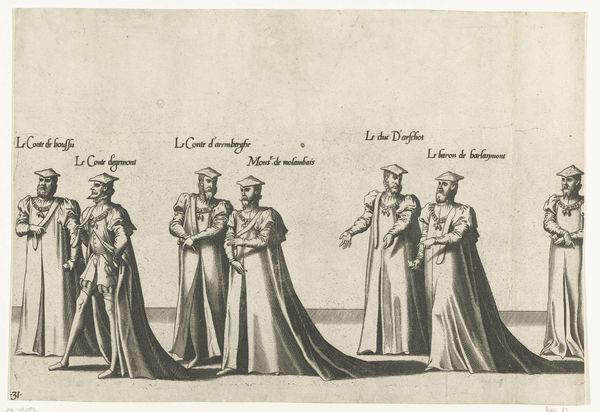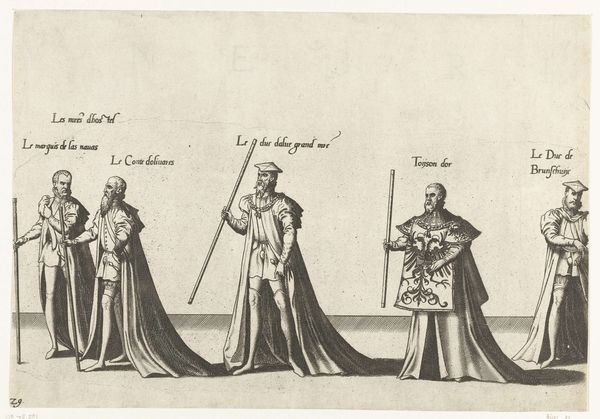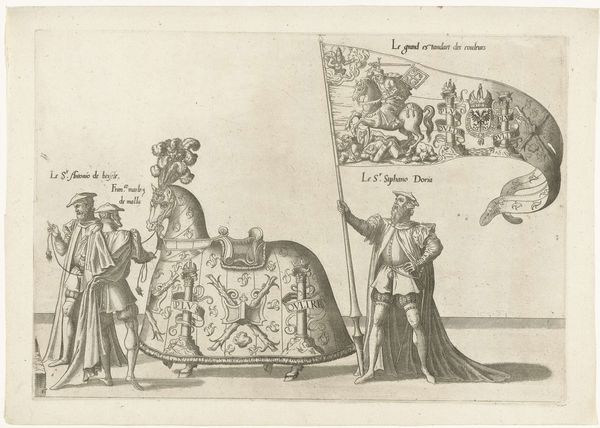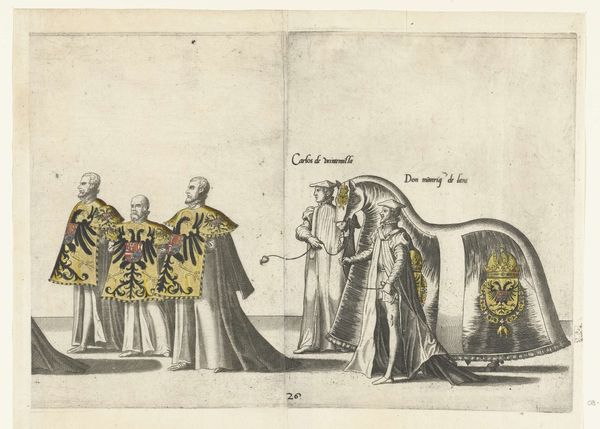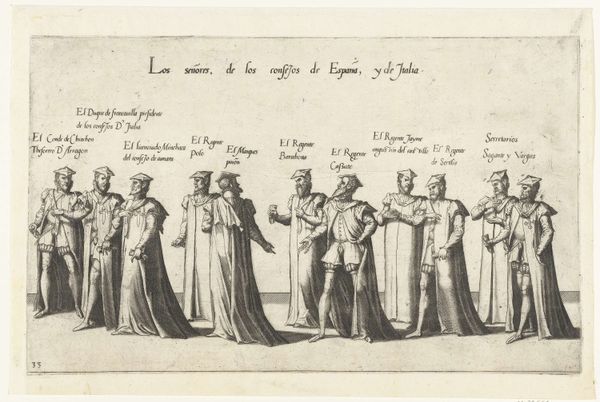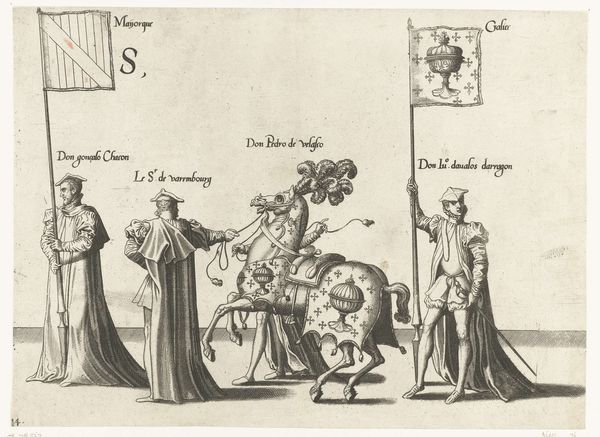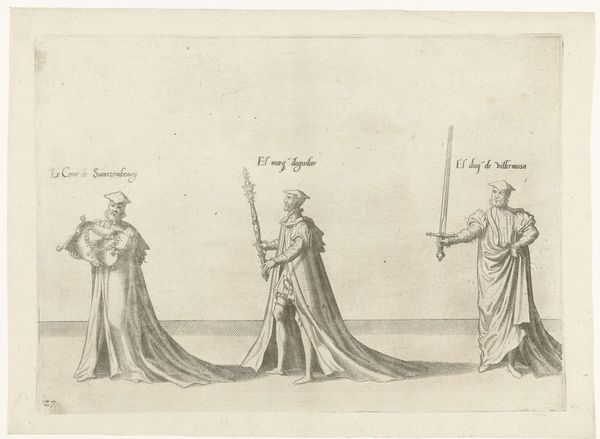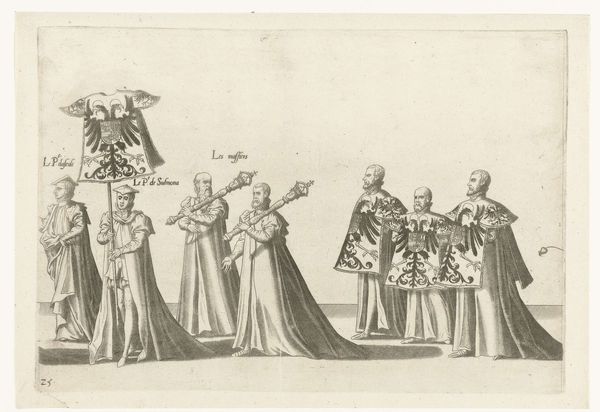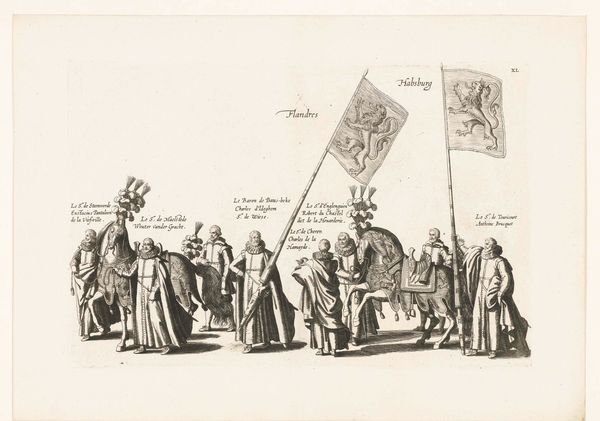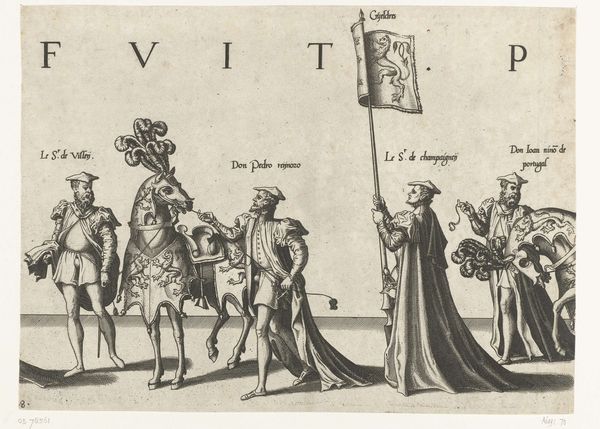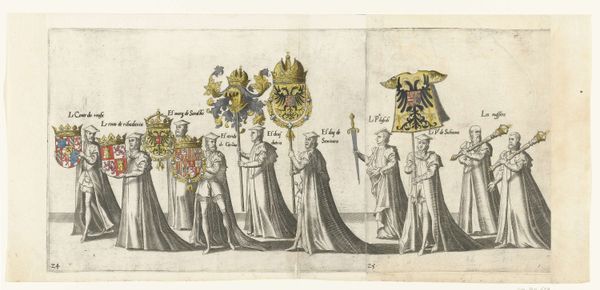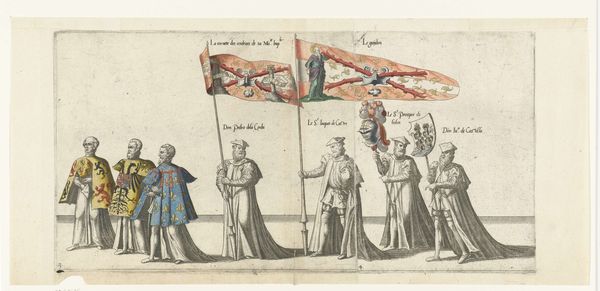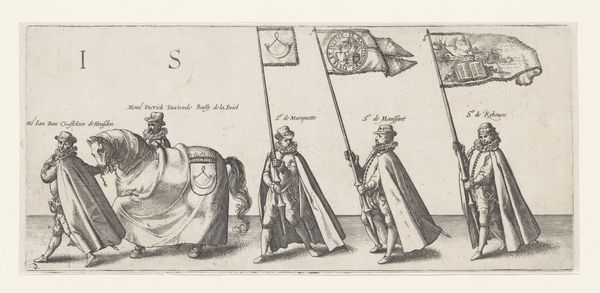
drawing, print, engraving
#
drawing
# print
#
figuration
#
11_renaissance
#
history-painting
#
engraving
Dimensions: height 242 mm, width 348 mm
Copyright: Rijks Museum: Open Domain
This print, made by Joannes van Doetechum around the late 16th century, presents a section of a grand procession, rendered through the incisive technique of engraving. Engraving is a demanding, labor-intensive process, where the artist meticulously carves lines into a metal plate, which then holds ink and transfers the image to paper. The very act of engraving, with its emphasis on precision and detail, mirrors the social order it depicts. The crisp, unwavering lines reflect the rigid hierarchies of the time, immortalizing the elite in their finery. Consider the skilled labor involved in both the creation of the garments worn by the figures and the print itself. The engraver's expertise, like that of the tailors and embroiderers who crafted the clothing, speaks to a culture where artistry and craftsmanship were intertwined with social status. The print serves as a reminder that even seemingly straightforward images are products of complex social and economic relationships. By examining the materials, techniques, and context of production, we gain a deeper understanding of the artwork and its place in history.
Comments
No comments
Be the first to comment and join the conversation on the ultimate creative platform.
